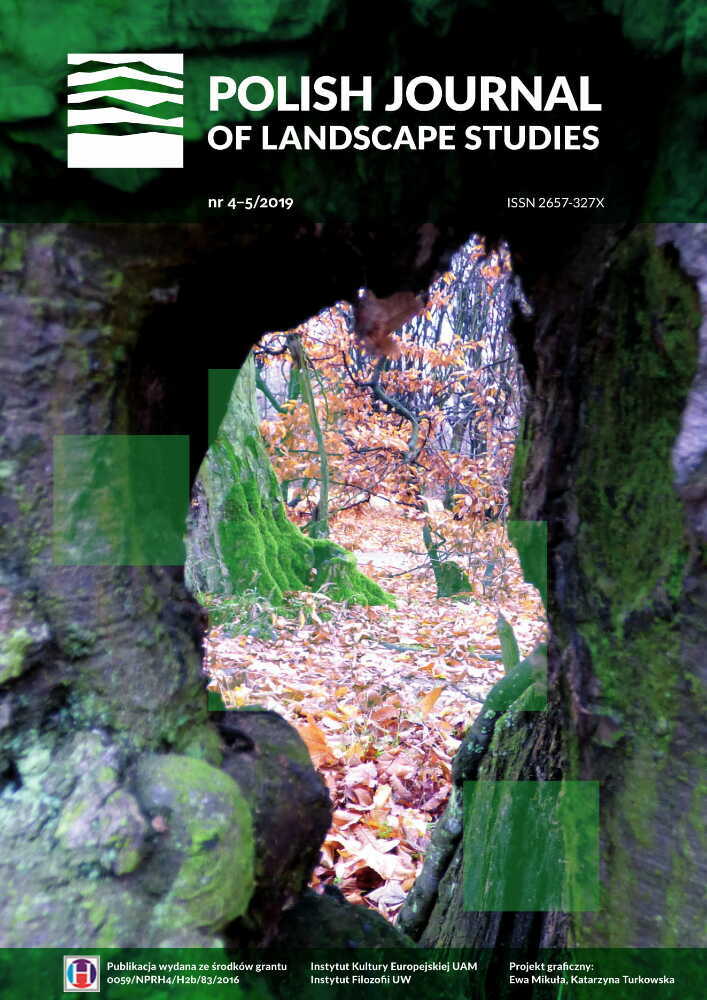Abstrakt
The paper offers a critical analysis of the representations of post-industrial landscapes in Upper Silesia. It takes a look at the products of visual culture after 1989: feature films set in the region and photographs by Wojciech Wilczyk, trying to detect their embedded ideological mechanism and explain its dynamics. Drawing on the concepts advanced by Tim Edensor and W.J.T. Mitchell, the paper demonstrates that that mechanism consists in using aestheticization tools and sight cropping, following which a comprehensive view is feigned. As a result, Upper Silesia appears to be a degenerate space affected by permanent stagnation. In closing, the requirements that representations of landscape should meet are enumerated in order to provide insights into the diversity of a region, as well as offering a point of departure for reflection on its place in the national imagination. Ultimately, these considerations enable the expression of Upper Silesian identity from a position other than that of inferiority and subordination.Bibliografia
Edensor, Tim. 2002. National Identity, Popular Culture and Everyday Life. Oxford: Berg.
Edensor, Tim. 2005. “Waste Matter — the Debris of Industrial Ruins and the Disordering of the Material World.” Journal of Material Culture 10 (3): 311-32.
Frydryczak, Beata. 2013. Krajobraz. Od estetyki picturesque do doświadczenia topograficznego [Landscape: From the Aesthetics of the “Picturesque” to Topographic Experience]. Poznań: Wydawnictwo Poznańskiego Towarzystwa Przyjaciół Nauk.
Grygiel, Marek. 2004. “Chłodnym okiem” [“With a Cool Gaze”]. In Czarno-biały Śląsk [Black and White Silesia], 13-15. Kraków: Galeria Zderzak—Górnośląskie Centrum Kultury.
Lewandowski, Jan F. 2012. Kino śląskie [Silesian Cinema]. Katowice: Śląsk.
Mitchell, William J.T. 2002a. “Introduction.” In Landscape and Power, edited by William J.T. Mitchell, 1-4. Chicago: The University of Chicago Press.
Mitchell, William J.T. 2002b. “Imperial Landscape.” In Landscape and Power, edited by William J.T. Mitchell, 5-34. Chicago: The University of Chicago Press.
Popczyk, Maria. 2014. “Krajobraz jako obraz” [“Landscape as Painting”]. In Krajobraz kulturowy [Cultural Landscape], edited by Beata Frydryczak and Mieszko Ciesielski, 55-64. Poznań: Wydawnictwo Poznańskiego Towarzystwa Przyjaciół Nauk.
Rybicka, Elżbieta. 2015. “Relacje centro-peryferyjne a polityka konstruowania toż samoś ci regionalnej” [“Center-periphery Relations and Politics Built on Regional Identity”]. In Centra-peryferie w literaturze polskiej XX i XXI wieku [Centers and Peripheries in Polish Literature of the 20th and 21st Centuries], edited by Wojciech Browarny, Elżbieta Rybicka, and Dobrawa Lisak-Gębala, 13-30. Kraków: Universitas.
Salwa, Mateusz. 2014. “Krajobraz jako doświadczenie estetyczne” [“Landscape as Aesthetic Experience”]. In Krajobraz kulturowy [Cultural Landscape], edited by Beata Frydryczak and Mieszko Ciesielski, 43-54. Poznań: Wydawnictwo Poznańskiego Towarzystwa Przyjaciół Nauk.
Wilczyk, Wojciech, 2004. Czarno-biały Śląsk [Black and White Silesia]. In Czarno-biały Śląsk [Black and White Silesia], 7-12. Kraków: Galeria Zderzak—Górnośląskie Centrum Kultury.
Wilczyk, Wojciech. 2013. “Wszystko monumentalnie podupada” [“Everything Monumentally Deteriorates”]. By Katarzyna Mrugała. Autoportret 1 (40): 34-44.
Wylie, John. 2007. Landscape. London: Routledge.
Zaremba, Łukasz. 2014a. “Męki obrazów” [“The Suffering of Paintings”]. Widok. Teorie i praktyki kultury wizualnej 5. http://pismowidok.org/index.php/one/article/view/169/284.
Zaremba, Łukasz. 2014b. “Polobrazy, krajobraz i to, co wspólne” [“Polobrazy, Landscape, and Their Commonalities”]. Widok. Teorie i praktyki kultury wizualnej 8. http://pismowidok.org/index.php/one/article/view/266/469.

